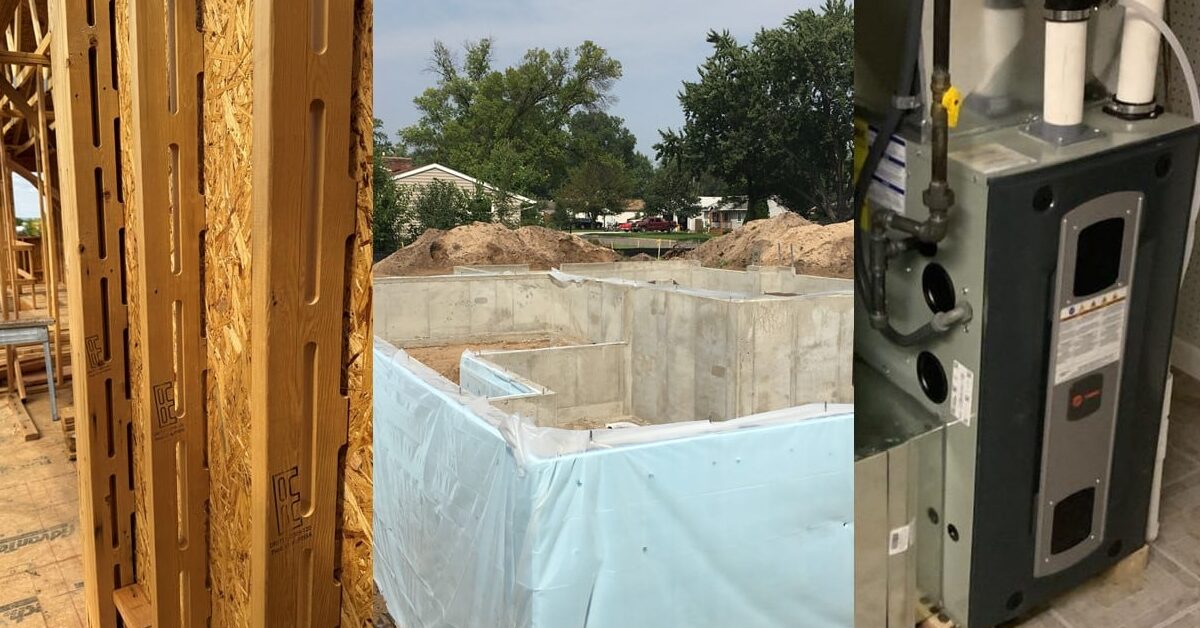HVAC Systems and Zero Energy Ready Homes
The Heating, Ventilation, And Cooling (HVAC) system is one component in the Energy Star Zero Energy Ready Home (ZERH) builds. It was the final mechanical system we needed to select. I’m sure the choice of the gas furnace with matching AC piqued the interest of many. Let’s delve into the rationale behind this choice.
HVAC systems and water heating over the past 10 years are becoming technology-based mechanical systems due to significant advancements in heat pump technology. This shift has created a new wave of energy efficient HVAC options that are transforming how homes operate.
The Rise of Technology in Energy Efficient HVAC
The importance of technology is that it becomes better and more affordable over time. An excellent example from twenty years ago was the change from big, heavy box TVs to plasma flat panel HD TVs with a clear picture and easily mounted on a wall. A 42″ plasma TV was about $10,000 and used a lot of power. Now, a flat panel 75″ 4K LED TV, which uses very little energy, can be bought for about $800.
The transformational plasma flat-panel HD TVs that replaced the box TVs are no longer produced. They were replaced by better, less expensive flat-panel LED TVs. This accessibility and affordability of technology is also what we can look forward to in the HVAC industry and what is happening with HVAC systems.
Planning Short- and Long-Term Investments in Zero Energy Ready Homes
With the Technology aspect in mind, it is time to break up our Energy Star Zero Energy Ready Home build into short and long-term elements. This is a crucial concept, especially when considering a house’s potential lifespan, which can easily exceed 100 years. In 10-20 years, our short-term elements, such as the HVAC systems and water heater, will require replacement. As the TV example illustrates, now that HVAC is becoming technology-based, new units will likely be nothing like the original ones.
The Long-Term Structure: Why It Still Matters
The long-term elements of a home will remain the same for 60, 80, or 100+ years since they are the most expensive parts to change, especially the foundation and the exterior wall. So, we want to get this done right! Investing in these long-term elements will ensure a comfortable and energy-efficient home for generations to come.
The home we are currently renting is a good example. It was built in the ’50s and was part of the post-WW2 housing boom. The foundation and exterior walls are part of the long-term structure, about 70 years old and original to the home. The exterior walls are 2x4s with R-11 paper-backed fiberglass batts for insulation. The basement is partly framed with no insulation, and the rest is painted concrete block with no insulation, drain tile, or water/vapor barriers.
The attic insulation is the only long-term element that has been updated. These older rambler (ranch) homes with vented attics have a lot of space, so adding an extra layer of blown-in insulation over the original R-19 batt insulation was easy. It most likely comes out to a combined R-40 in the attic. It was a simple, low-cost upgrade that was most likely added in the 1970s or 1980s and immediately showed results on monthly energy bills.
Short Term Structure: How Technology Evolves
The short-term elements of the home have all been replaced, likely multiple times. The windows are new R-5 triple-pane units, replacing the R-2.5 double-pane or R-0.5 single-pane windows. The triple-pane windows are a 500% efficiency upgrade from the original single-panel windows!
The newer 96% efficient gas furnace replaced an 85, 75, or 65% efficient unit. A 50% efficient gas furnace would have been the original furnace from the 1950’s. A 14 SEER AC replaced a 10,8,or 6 SEER unit. Central air was most likely added in the 1970s, and that unit would have been rated at 4.0 SEER. The original AC unit for the house was a window unit, a significant energy hog! The electrical outlet is still by the window where the AC unit would have been installed for the summer.
A new 85% efficient tanked gas water heater replaced a 75 or 65% unit. A 50% efficient unit would have been the original water heater for the house. The water heater was probably replaced at least twice before. I saw the water heater before it was replaced, and it was a vintage late 2000s model. New AC LED light bulbs have replaced the original incandescent light bulbs. The AC LED light bulbs use 86% less energy or a 650% increase in efficiency.
As you can see, the short-term elements have been replaced multiple times and have dramatically changed in power use and energy efficiency over the 68 years of this home’s life, while the long-term structure has remained the same since 1956.
Conclusion: Build Smart, Upgrade Smarter
In conclusion, for these new Energy Star Zero Energy Ready Homes the HVAC system is a short-term technology element which will be replaced with a more energy-efficient energy efficient HVAC model in 15-20 years. Right now, given the tight build budget, the gas furnace makes the most sense. That could change in 6-12 months with how fast heat pump technology is changing and dropping in price.
It’s crucial to prioritize investments in insulating the long-term structure, including the foundation and the exterior walls, which will remain the same for potentially 100+ years.
